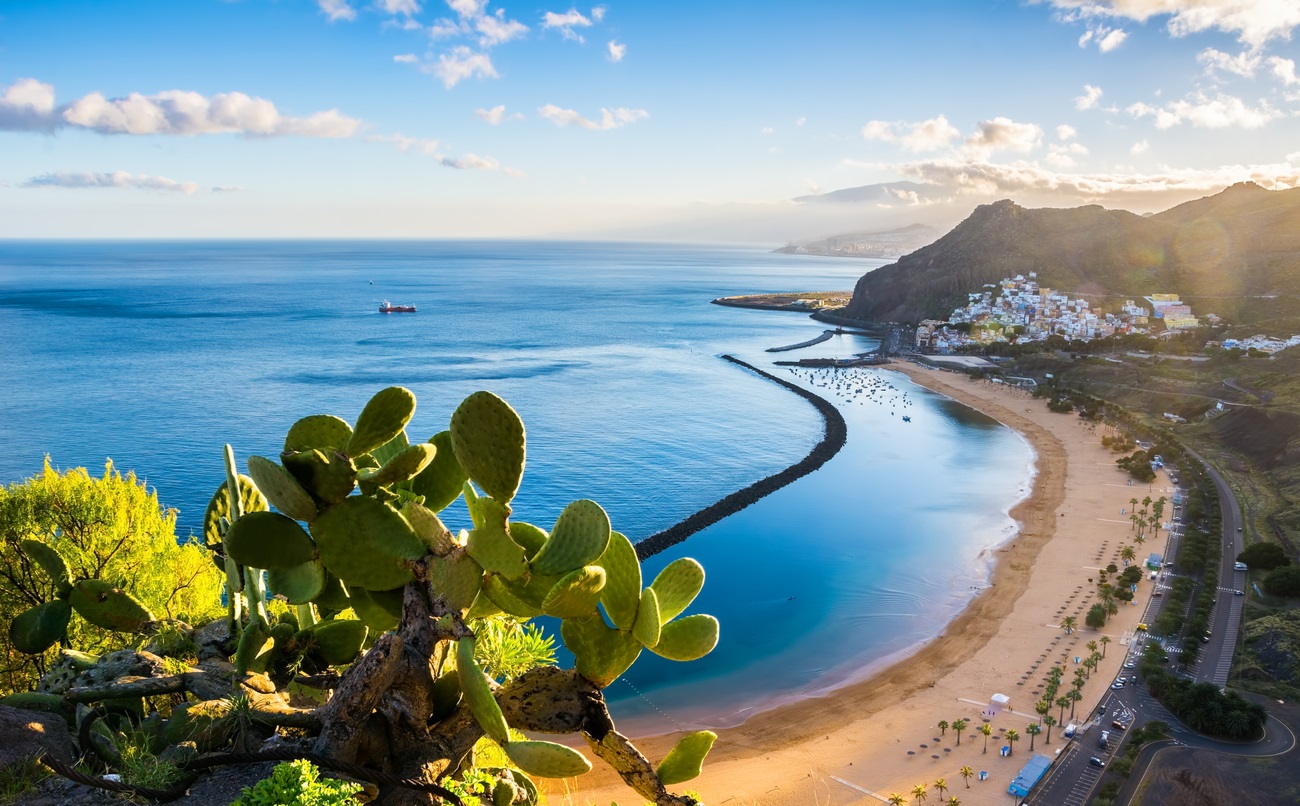Tenerife Wine Tours, Itinerary & Travel Guide
Tenerife may just be the most popular of the seven Canary Islands for a visit. One of the most easily accessible islands from mainland Europe, Tenerife has it all. Whether you love the beach, volcanic wine, hiking, surfing, or exploring, Tenerife is appropriate for all types of travelers. This itinerary will include a little bit of everything, and you can mix and match it to best suit your travel preferences.
- Tenerife Wine Tours, Itinerary & Travel Guide
- Travel Practicalities
- Where to Stay on Tenerife
- Tenerife Wine Tours & Fun Experiences to Book
- Tenerife Highlights Full-Day Tour by Viajes Teide S.L.
- Canarian Wine Tasting Private Full-Day Tour and Aloe Vera Farm by Tenerife Private Trips
- Private Tenerife Wine Tasting with Sunset and Stargazing Activity by Night Skies Tenerife
- Whale and Dolphin Watching Cruising Catamaran with Lunch and Drinks by Monte Cristo Catamaran
- Tandem Paragliding Flight in South Tenerife by Brisa Paragliding Tenerife
- Kayaking with Dolphins and Snorkeling With Turtles in Tenerife by XploreTenerife
- Mt. Teide and Masca Valley Tour in Tenerife
- Bodegas Monje Winery Tour & Mojo Sauce Workshop
- 7-Day Tenerife Itinerary to Properly Explore the Island
- Day 1: Explore Santa Cruz, Tenerife's capital
- Day 2: Hike in Anaga Natural Park and Eat at a Guachinche
- Day 3: Explore the Teide volcano and sample volcanic wine
- Day 4: Beach day
- Day 5: Learn to surf (or take the kids to a water park)
- Day 6: Visit Los Gigantes and Catch the Sunset
- Day 7: Icod de los Vinos
- Frequently Asked Questions about Visiting Tenerife
Travel Practicalities
One of the calls of Tenerife is its year-round springish weather. Expect sunshine and warm temps all year long with very little rain. It is worth noting that the south of the island typically boosts more sunshine and less rain than the north. The island is often windy, so expect a breeze.
This seven-day itinerary can be added on to virtually any other European adventure. A variety of airlines fly from many European hubs to Tenerife, which is home to two different airports (TFN and TFS).
RELATED: 7 Day Fuerteventura Itinerary: Best Things to Do on Fuerteventura
To best enjoy the island’s many treasures, car rental is essential. It’s easy and affordable to rent at either airport or many of Tenerife’s hotels. The island is part of Spain and uses the euro, so have some of the currency on hand. Keep in mind that although the island is part of Europe, it’s closer to Africa. This means the sun burns strong, so make sure to pack sunblock and a hat.
Where to Stay on Tenerife
Tenerife’s hotels range from all-inclusive Spanish resorts like H10, Riu, or Barcelo to more intimate boutique spots. There are also two Marriott properties on the island: The Ritz-Carlton Abama and the Sheraton La Caleta. If you’d prefer something apt for a group or family, consider a villa or apartment rental, many of which feature amenities like pools, barbecue grills, bikes, and more. You can also browse a variety of hotel options right here.
Tenerife Wine Tours & Fun Experiences to Book
If leveraging local knowledge and scheduling private or group tours makes more sense for your travel preferences, there are dozens of options for wine tours and outdoor experiences. Below, we’ve include some of our favorites that you can book in advance.
Tenerife Highlights Full-Day Tour by Viajes Teide S.L.
Embark on a comprehensive adventure with Viajes Teide S.L. on this full-day tour, revealing Tenerife’s contrasting landscapes, historical tales, and breathtaking views. From the otherworldly terrains of Mt. Teide National Park to the charming coastal enclave of Garachico, this tour gives you a genuine taste of Tenerife’s vibrant diversity.
Tour Highlights:
- Journey into the UNESCO-listed volcanic landscapes of Mt. Teide National Park.
- Discover Vilaflor, a charming town nestled in the volcano’s foothills.
- Visit Icod Los Vinos, the home of the world’s oldest dragon tree.
- Explore Garachico, learning about the historic volcanic eruption that reshaped it.
- Admire sweeping views of La Gomera from the ridge-top hamlet of Masca.
- Enjoy the convenience of air-conditioned coach transport and selected hotel pickups and drop-offs in south Tenerife.
Canarian Wine Tasting Private Full-Day Tour and Aloe Vera Farm by Tenerife Private Trips
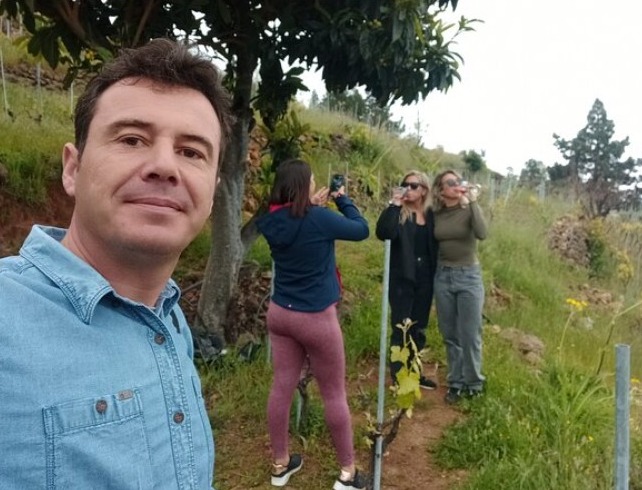
Revel in the heart of Tenerife’s captivating culture with Tenerife Private Trips. This private tour offers a unique exploration into the island’s authentic Canarian winemaking traditions, the healing wonders of aloe vera, and a feast of local delicacies, all within the backdrop of Tenerife’s stunning landscapes. Arrange your private wine tour of Tenerife today!
Tour Highlights:
- Immerse in a delightful stroll through a sprawling aloe vera plantation and tropical trees.
- Sample the exotic flavors of aloe vera and learn about its myriad health benefits.
- Venture up to a mountain winery for a taste of 4 local wines and Canarian tapas, while soaking up panoramic ocean views.
- Dive into enlightening tales about the vineyard, local wine production, and Canarian legends.
- Embark on a journey to the Herques Gorge and, if you’re lucky, spot the Cave of the 1000 Aboriginal Mummies!
- Wrap up the tour with an optional lunch at a quaint local restaurant nestled in the mountains or opt for a convenient drop-off back at your hotel.
Private Tenerife Wine Tasting with Sunset and Stargazing Activity by Night Skies Tenerife
Experience an intimate celestial spectacle under the beautiful Tenerife night sky, courtesy of Night Skies Tenerife. This exclusive, private tour merges the magic of stargazing with the delight of wine tasting in a breathtaking setting. As the sun melts into the horizon, get ready for a one-of-a-kind journey that fuses astronomy, local flavors, and mesmerizing sunset views.
Tour Highlights:
- Enjoy the exclusivity of a private tour, designed just for you and your loved ones.
- Savor local wines in the backdrop of a radiant Tenerife sunset.
- Embark on an unforgettable stargazing journey under Tenerife’s famously clear night skies.
- Explore the cosmos through the lens of a telescope and learn about the celestial sphere from knowledgeable guides.
- Experience the tranquil evening hours in one of the world’s most spectacular stargazing locations.
Don’t let the stars wait, seize the chance to have an unforgettable evening. Book or schedule your Private Tenerife Wine Tasting with Sunset and Stargazing Activity now, and get ready for a night of stars, wines, and memories to last a lifetime.
Whale and Dolphin Watching Cruising Catamaran with Lunch and Drinks by Monte Cristo Catamaran
Embrace the thrilling opportunity to encounter whales and dolphins in their natural habitat with the Monte Cristo Catamaran cruise. This tour combines the breathtaking experience of marine wildlife watching with the comfort and enjoyment of lunch and drinks onboard a relaxing catamaran. Whether you’re time-bound or simply love the idea of a small-group tour, this experience guarantees an intimate atmosphere and unforgettable sights.
Tour Highlights:
- Marvel at the sight of dolphins and whales swimming freely in their natural environment, under the guidance of a knowledgeable guide.
- The small-group setting of the tour enhances the intimacy and overall experience.
- Make the most of your trip with complimentary drinks, snacks, and tapas served onboard.
- Relish the relaxing ambience of the catamaran’s spacious sundecks.
Ready to embark on a remarkable sea-life adventure? Book your tour today and enjoy the stunning beauty of Tenerife’s aquatic wildlife while basking in the Mediterranean sun.
Tandem Paragliding Flight in South Tenerife by Brisa Paragliding Tenerife
Skip the crowded tourist viewpoints and take to the skies with a tandem paragliding flight over South Tenerife. This unique experience offers an unparalleled perspective of the island’s scenic beauty that few visitors get to witness. Even if you’re a beginner, you’re in good hands with a seasoned pilot who will guide you throughout the journey, providing expert instruction and ensuring your safety with certified equipment.
Tour Highlights:
- Enjoy a truly unique view of Tenerife, far from the madding tourist crowd.
- Rest easy with a highly experienced pilot by your side, ensuring a smooth and safe flight.
- No previous paragliding experience necessary, making it an adventure for everyone.
- Have the option to purchase videos or photos of your flight to relive the excitement.
With the added convenience of hotel pickup included, all you need to do is gear up for an unforgettable airborne adventure. Schedule your flight today and get ready to soar above the breathtaking landscapes of South Tenerife.
Kayaking with Dolphins and Snorkeling With Turtles in Tenerife by XploreTenerife
Get ready for an ocean adventure with this extraordinary tour where you kayak alongside dolphins and snorkel with turtles right in their natural habitats. Located in Costa Adeje, a region of Tenerife’s Atlantic waters renowned for its diverse marine life, you have the chance to encounter up to five different species of dolphins, including the bottlenose and striped variety.
Tour Highlights:
- Explore Tenerife’s spectacular west coast with a unique, water-level perspective from your kayak.
- Enjoy a rare opportunity to see wild dolphins up close, right in their natural environment.
- No prior kayaking experience is required, and complete instructions are provided.
- Get the chance to spot a variety of dolphin species, including the popular bottlenose and distinctive striped dolphins.
Don’t miss this unforgettable encounter with some of the ocean’s most captivating creatures. Whether you’re a seasoned kayaker or a first-timer, book your adventure today to experience the thrill of kayaking with dolphins and snorkeling with turtles in Tenerife.
Mt. Teide and Masca Valley Tour in Tenerife
This bespoke full-day tour provides an enriching journey through the grandeur of Tenerife’s landscapes. Witness the majestic Mt. Teide and the fascinating Masca Valley under the guidance of an expert, ensuring an immersive experience that leaves a lasting impression.
- Teide National Park: Your day begins with a mesmerizing exploration of the UNESCO-listed Teide National Park. The stark volcanic landscapes that surround Mt. Teide offer countless photo opportunities, and the unique flora, such as the island’s distinctive dragon tree, adds an extra layer of charm to the tour.
- Vilaflor: We ascend to Vilaflor, recognized as one of Spain’s loftiest villages. It’s a chance to breathe in the thin, crisp air and witness the rugged beauty from a truly remarkable vantage point.
- Masca & Garachico: The journey continues with leisurely stops at Masca and Garachico. Nestled amongst rolling hills, these quaint villages provide a touch of provincial life that perfectly contrasts the wild landscapes explored earlier.
This enriching tour includes convenient round-trip transportation, making it an effortless way to experience the breathtaking beauty of Tenerife. Are you ready to join us for a day of discovery? Don’t hesitate to secure your spot on this incredible journey, offered by Pindoria Viajes SL.
Bodegas Monje Winery Tour & Mojo Sauce Workshop
If you’re looking for an immersive epicurean adventure, this Bodegas Monje Winery experience, topped off with a hands-on mojo sauce workshop, is your passport to the heart of Tenerife’s culinary delights. This experience is about so much more than simply tasting food and wine – it’s about delving into the rich tapestry of the Canary Islands’ gastronomic history.
- Winery Tour and Tasting: The experience begins with a guided tour of Bodegas Monje winery. Navigate through aromatic vineyards and ancient cellars while gaining insights into the winemaking process. The exploration culminates in a wine tasting where you’ll savour some of the estate’s finest vintages.
- Mojo Sauce Workshop: The excitement continues as you put on your chef’s hat to learn the secrets of creating the Canary Islands’ famous mojo sauce. This hands-on cooking class equips you with the skills to recreate this iconic sauce back home, keeping your Tenerife memories alive.
Finally, enjoy a meal with your group, basking in the joy of a culinary journey well-travelled. So, why wait? Book your spot now and get ready for an unforgettable gastronomic journey with Bodegas Monje Wine&Tours.
7-Day Tenerife Itinerary to Properly Explore the Island
Day 1: Explore Santa Cruz, Tenerife’s capital
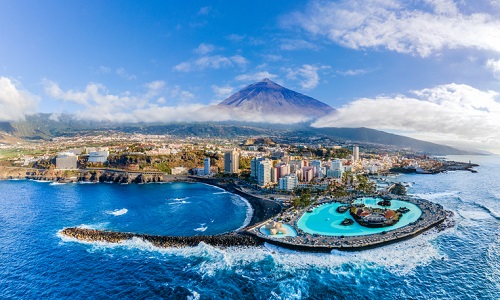
This is an especially ideal way to start your trip if you land at Tenerife Norte Aiport. Settle into your hotel and check out the historical town center of the island’s capital, Santa Cruz. Stroll down La Rambla and check out the Plaza España. Historical buffs can visit the Natural History Museum to understand more about Los Guanches, the indigenous people of the Canary Islands.
If it happens to be sunny up north, head to the most famous white sand beach on the island, Las Teresitas. If the weather isn’t beach-appropriate, shop at the Nuestra Señora de África Market instead.
Day 2: Hike in Anaga Natural Park and Eat at a Guachinche
Deemed a UNESCO Biosphere Reserve, Anaga is a laurel forest part of a unique microclimate. While much of Tenerife is dry with volcanic rock, this misty forest feels like you’re in an entirely different world. Hikes vary in length and difficulty, and you may stumble upon some gorgeous beaches or natural swimming holes along the way.
After a rewarding hike, head to one of the many guachinches around the northern part of the island. These no-frills restaurants offer typical Canarian food and locally produced wine. In fact, if you want to stop right in the park for lunch, consider Guachinche Bibi y Mana, where you can sample the island’s traditional potatoes with mojo picon sauce, beef stews, and goat cheese produced on the island.
Day 3: Explore the Teide volcano and sample volcanic wine
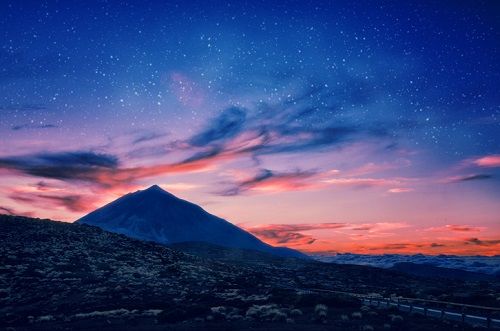
Mt. Teide is Spain’s highest peak. The volcano has a cable car and numerous hiking trails. Or, you can simply drive around through the area and snap some epic shots of the massive peak. Note if you want to hike to the very top, you’ll need to request a permit. It’s best to buy cable car tickets online, and make sure to check the weather conditions there the day of your trip. Sometimes the cable car and peak closes during inclement weather, even when it’s perfectly sunny down below at sea level.
After a morning at high altitude, come back down to sea level and explore some of Tenerife’s volcanic vineyards.
Winetraveler Tip: Favorite vineyards and wineries include Bodegas Vidueño, Bodegas Monje, (with an epic sea view terrace) and Bodegas Lomo. Make sure to contact these wineries in advance to reserve tours and tastings.
Day 4: Beach day
Whether it’s exotic black sand or more traditional golden coastline, Tenerife has plenty of beaches. Those wanting a more unique experience should head to the hidden Montaña Pelada, a black sand cove peppered with lava rocks. For those just wanting to kick back on soft white sand with all the amenities nearby, the popular Playa de las Vistas is an alternative.
Day 5: Learn to surf (or take the kids to a water park)
Tenerife’s winds are apt for all kinds of surfing: wind, kite, and regular. The place to go for your surf lessons is El Médano, a particularly breezy beach spot with a number of surf schools and options for board rentals.
If surfing isn’t your thing, you can hit the nearby Playa Tejita. Its windswept sands are mostly frequented by locals, and the beach seems more exotic and far-flung than many other more touristy beaches in the south of the island.
Families should head to either Siam Park, one of the most popular water parks in Europe, or Loro Park, an animal and plant reserve.
Day 6: Visit Los Gigantes and Catch the Sunset
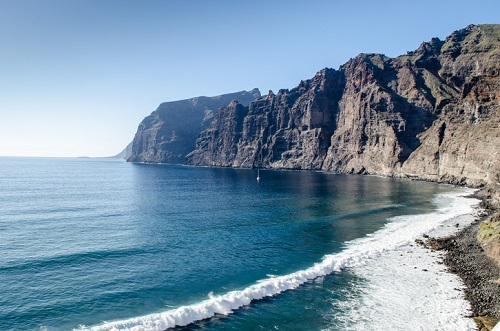
Los Gigantes is Tenerife’s most iconic cliffs, a set of enormous, rocky seaside precipices that you can explore by hiking or view via boat rides. You can also drive to viewpoints to get some incredible photos of the cliffs. The resort towns below feature many outdoor terraces where you can admire the cliffs and also enjoy the sunset with a glass of wine in hand. If you’d like to stay in a hotel with views of the cliffs, the Barcelo Santiago’s suites have many balconies facing these massive rocky structures.
Day 7: Icod de los Vinos
This unique region in northern Tenerife has a number of interesting attractions. One is the Drago Milenario, a special tree that’s rumored to be 1,000 years old. There’s also the Cueva del Viento, a cave with many distinct types of flora inside. Don’t forget about the Drago Butterfly Park, which features more than 800 different butterfly species. Wine lovers shouldn’t miss the Museo de Malvasia, where you can learn about different styles of Canarian wine.
Frequently Asked Questions about Visiting Tenerife
You are reading “The Perfect Tenerife Itinerary: Wine Tours, Beaches, Hiking & Surfing“: Back To Top
things to do on Tenerife, wine tours, wineries near me, Tenerife week itinerary: Canary Islands travel guides and itineraries
If you enjoyed this guide, consider joining the Facebook Group to interact with other Winetravelers and for wine travel inspiration around the world. Be sure to follow us on both Twitter and Instagram to stay up to date with our trending content.
